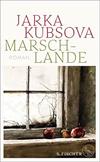
Persepolis: The Story of a Childhood
by Marjane Satrapi | Graphic Novels | This book has not been rated.
ISBN: 0375422307 Global Overview for this book
ISBN: 0375422307 Global Overview for this book
1 journaler for this copy...
Like Maus and Maus II, this tells a heartbreaking story in cartoon format. Translated by L'Association in Paris, France.
Reviews:
From Publishers Weekly
Satrapi's autobiography is a timely and timeless story of a young girl's life under the Islamic Revolution. Descended from the last Emperor of Iran, Satrapi is nine when fundamentalist rebels overthrow the Shah. While Satrapi's radical parents and their community initially welcome the ouster, they soon learn a new brand of totalitarianism is taking over. Satrapi's art is minimal and stark yet often charming and humorous as it depicts the madness around her. She idolizes those who were imprisoned by the Shah, fascinated by their tales of torture, and bonds with her Uncle Anoosh, only to see the new regime imprison and eventually kill him. Thanks to the Iran-Iraq war, neighbors' homes are bombed, playmates are killed and parties are forbidden. Satrapi's parents, who once lived in luxury despite their politics, struggle to educate their daughter. Her father briefly considers fleeing to America, only to realize the price would be too great. "I can become a taxi driver and you a cleaning lady?" he asks his wife. Iron Maiden, Nikes and Michael Jackson become precious symbols of freedom, and eventually Satrapi's rebellious streak puts her in danger, as even educated women are threatened with beatings for improper attire. Despite the grimness, Satrapi never lapses into sensationalism or sentimentality. Skillfully presenting a child's view of war and her own shifting ideals, she also shows quotidian life in Tehran and her family's pride and love for their country despite the tumultuous times. Powerfully understated, this work joins other memoirs-Spiegelman's Maus and Sacco's Safe Area Goradze-that use comics to make the unthinkable familiar.
Copyright 2003 Reed Business Information, Inc.
From School Library Journal
Adult/High School-Marji tells of her life in Iran from the age of 10, when the Islamic revolution of 1979 reintroduced a religious state, through the age of 14 when the Iran-Iraq war forced her parents to send her to Europe for safety. This story, told in graphic format with simple, but expressive, black-and-white illustrations, combines the normal rebelliousness of an intelligent adolescent with the horrors of war and totalitarianism. Marji's parents, especially her freethinking mother, modeled a strong belief in freedom and equality, while her French education gave her a strong faith in God. Her Marxist-inclined family initially favored the overthrow of the Shah, but soon realized that the new regime was more restrictive and unfair than the last. The girl's independence, which made her parents both proud and fearful, caused them to send her to Austria. With bold lines and deceptively uncomplicated scenes, Satrapi conveys her story. From it, teens will learn much of the history of this important area and will identify with young Marji and her friends. This is a graphic novel of immense power and importance for Westerners of all ages. It will speak to the same audience as Art Spiegelman's Maus (Pantheon, 1993).
Susan H. Woodcock, Fairfax County Public Library, Chantilly, VA
Copyright 2003 Reed Business Information, Inc.
From Booklist
Satrapi's great-grandfather was Iran's last emperor, the one overthrown by the father of the shah overthrown in the 1979 Islamic revolution. Doubtless their pedigree of former greatness somewhat shielded her leftist family from the Ayatollah Khomeini's authoritarian regime, and her extraordinary autobiography in comics, which reflects her perspective from ages 10 to 14, probably understates the violence that swirled around her, cresting in the outbreak of the Iran-Iraq war. At first, the revolution freed an uncle who idolized her and some of her parents' friends from prison, but soon the tide turned, and the former prisoners had to flee (at least one was killed before he could). Her father and uncle explained modern Iran's past to her, all but dispelling her childish religiosity, and she joined her parents at political demonstrations. When an Iraqi missile destroyed Jewish neighbors, however, her parents determined to use their upper-middle-class means to get out. Satrapi's cursive, geometrical drawing style, reminiscent of the great children's author-artist Wanda Gag's, eloquently conveys her ingenuousness and fervor as a child. Ray Olson
Pantheon Books, 2002.
ISBN 0-375-42230-7
- Fragments of Isabella
- Maus
- Maus II
- Voices fromthe Holocaust
- We're Alive and Life Goes on
- The Hiding Place
- Obasan
- Persepolis
Reviews:
From Publishers Weekly
Satrapi's autobiography is a timely and timeless story of a young girl's life under the Islamic Revolution. Descended from the last Emperor of Iran, Satrapi is nine when fundamentalist rebels overthrow the Shah. While Satrapi's radical parents and their community initially welcome the ouster, they soon learn a new brand of totalitarianism is taking over. Satrapi's art is minimal and stark yet often charming and humorous as it depicts the madness around her. She idolizes those who were imprisoned by the Shah, fascinated by their tales of torture, and bonds with her Uncle Anoosh, only to see the new regime imprison and eventually kill him. Thanks to the Iran-Iraq war, neighbors' homes are bombed, playmates are killed and parties are forbidden. Satrapi's parents, who once lived in luxury despite their politics, struggle to educate their daughter. Her father briefly considers fleeing to America, only to realize the price would be too great. "I can become a taxi driver and you a cleaning lady?" he asks his wife. Iron Maiden, Nikes and Michael Jackson become precious symbols of freedom, and eventually Satrapi's rebellious streak puts her in danger, as even educated women are threatened with beatings for improper attire. Despite the grimness, Satrapi never lapses into sensationalism or sentimentality. Skillfully presenting a child's view of war and her own shifting ideals, she also shows quotidian life in Tehran and her family's pride and love for their country despite the tumultuous times. Powerfully understated, this work joins other memoirs-Spiegelman's Maus and Sacco's Safe Area Goradze-that use comics to make the unthinkable familiar.
Copyright 2003 Reed Business Information, Inc.
From School Library Journal
Adult/High School-Marji tells of her life in Iran from the age of 10, when the Islamic revolution of 1979 reintroduced a religious state, through the age of 14 when the Iran-Iraq war forced her parents to send her to Europe for safety. This story, told in graphic format with simple, but expressive, black-and-white illustrations, combines the normal rebelliousness of an intelligent adolescent with the horrors of war and totalitarianism. Marji's parents, especially her freethinking mother, modeled a strong belief in freedom and equality, while her French education gave her a strong faith in God. Her Marxist-inclined family initially favored the overthrow of the Shah, but soon realized that the new regime was more restrictive and unfair than the last. The girl's independence, which made her parents both proud and fearful, caused them to send her to Austria. With bold lines and deceptively uncomplicated scenes, Satrapi conveys her story. From it, teens will learn much of the history of this important area and will identify with young Marji and her friends. This is a graphic novel of immense power and importance for Westerners of all ages. It will speak to the same audience as Art Spiegelman's Maus (Pantheon, 1993).
Susan H. Woodcock, Fairfax County Public Library, Chantilly, VA
Copyright 2003 Reed Business Information, Inc.
From Booklist
Satrapi's great-grandfather was Iran's last emperor, the one overthrown by the father of the shah overthrown in the 1979 Islamic revolution. Doubtless their pedigree of former greatness somewhat shielded her leftist family from the Ayatollah Khomeini's authoritarian regime, and her extraordinary autobiography in comics, which reflects her perspective from ages 10 to 14, probably understates the violence that swirled around her, cresting in the outbreak of the Iran-Iraq war. At first, the revolution freed an uncle who idolized her and some of her parents' friends from prison, but soon the tide turned, and the former prisoners had to flee (at least one was killed before he could). Her father and uncle explained modern Iran's past to her, all but dispelling her childish religiosity, and she joined her parents at political demonstrations. When an Iraqi missile destroyed Jewish neighbors, however, her parents determined to use their upper-middle-class means to get out. Satrapi's cursive, geometrical drawing style, reminiscent of the great children's author-artist Wanda Gag's, eloquently conveys her ingenuousness and fervor as a child. Ray Olson
Pantheon Books, 2002.
ISBN 0-375-42230-7
- Fragments of Isabella
- Maus
- Maus II
- Voices fromthe Holocaust
- We're Alive and Life Goes on
- The Hiding Place
- Obasan
- Persepolis

















